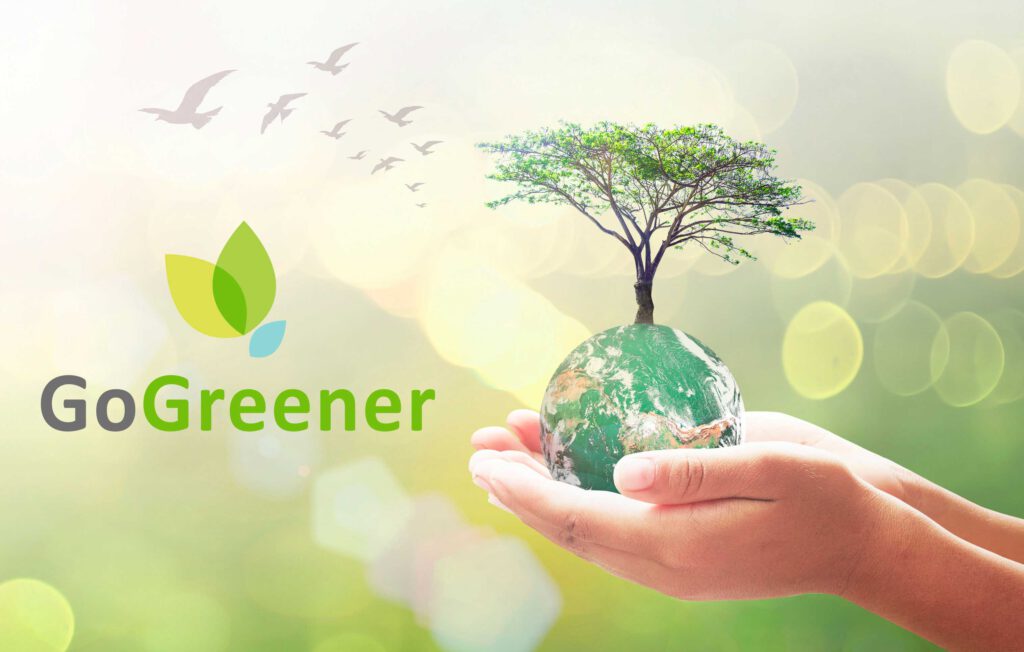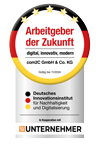There is increasing focus on sustainable and environmentally conscious management of print media after their period of use. What happens to banners, pop-up panels, self-adhesive films, etc. after their lifespan ends? Print media recycling is still in its early stages, with numerous challenges to overcome.
The connection between com2C and recycling industry professionals is close and targeted, with the clear intention of developing environmentally friendly print media. Markus Sprung, Managing Director of S & B Kunststoffrecycling GmbH, gives an exciting insight into the recycling of polypropylene (PP) and polyvinyl chloride (PVC).
Interview with Markus Sprung, Managing Director of S & B Kunststoffrecycling GmbH

Markus Sprung is managing director of S & B Kunststoffrecycling GmbH
What forms of recycling are there?
With the Circular Economy Act of 2012, the legislature agreed that waste avoidance has the highest priority. i.e. Further use, reuse and further recycling come before the actual recycling. In plastics recycling, material recycling begins, in which we try to recover the raw material through various forms of sorting, separation, shredding, melt filtration and so-called pyrolysis. Only if all of these measures do not promise success or are not economically viable will at least the energy be obtained from the waste through thermal recycling in order to use it to produce new products.
Can polypropylene (PP) film be recycled?
Polypropylene film has been successfully recycled for decades and is used again in the form of regrind and granules in a wide variety of products such as bumpers, battery boxes, pipes and other products. It is important that the raw material to be recycled is made available according to type. A PP film that is stabilized with polyester fleece, for example, cannot be mechanically processed. The Blockout 180 PP LUVESS SM W is therefore one of the print media that can be easily recycled.
How do PP and PVC compare in terms of their recyclability?
Both plastics are equally suitable for recycling. Both types of plastic have been processed for decades and find a second life in various recycled products. However, PVC burns at a lower temperature than PP (although the melting point of PVC is lower than that of PP), which can release harmful chlorine compounds. This can lead to massive damage to the processing machines. It must therefore be ruled out that PVC comes into contact with other plastics during the recycling process.

How do PP and PVC compare in terms of thermal recycling?
Polypropylene (PP) is more suitable for thermal recycling compared to polyvinyl chloride (PVC) for several reasons:
PP has a high caloric value, which offers an advantage for waste incineration plants when burning waste with a low caloric value. PVC also has the disadvantage that the formation of hydrogen chloride deprives the fire of oxygen. Put bluntly, the fire goes out and this is not desirable for the incinerators. In addition, the wear and tear on the incineration systems caused by the combustion of PVC is significantly higher, which leads to frequent and costly overhauls and thus downtime. In addition to the environmental impact, the resulting chlorine compounds require additional emission control measures. In contrast, thermal recycling of PP produces fewer environmentally harmful emissions.
Due to the high risk, many recyclers do not accept PVC at all. Since only a few plants are suitable for the safe recycling of PVC, this process is also more expensive.
Overall, these factors make polypropylene (PP) a cheaper option for thermal recycling compared to PVC, allowing for a more efficient and environmentally friendly waste disposal process.
What about recycling self-adhesive PP films, which still have an adhesive layer?
Self-adhesive films made of PP are well suited for thermal recycling.
Self-adhesive films generally pose a problem for recycling or the recycling process. On the one hand, the shredding process is made more difficult by the adhesive. As a rule, process heat is generated during shredding. This further increases the adhesive effect and contaminates the machines and can lead to the system coming to a standstill. In addition, depending on the dosage, the adhesive would appear in the final product with a rough surface and change the technical properties of the plastic.
Print media is predominantly printed when it is sent to the recycling process. Are printer inks a hindrance to recycling?
No, the printer inks are not a problem because they are not that important. In our studies, we tested media with extremely high levels of ink application and found that recycling material that was printed exclusively in black showed slight abnormalities. In practice, however, we always use a mixture of print media with different thicknesses. Here the inks do not change the process.
Large format printing uses print media made from different base substrates. How do PP, PET, PES and PVC behave in recycling?
All types of plastic mentioned above are recyclable. The crucial question is whether there are also applications for the recyclates created through recycling. The question regarding PP and PVC can definitely be answered with a clear yes. While it will be difficult to find a corresponding application for colorfully printed PET films. The first question you have to ask yourself when it comes to recycling is always the question of the market for the end product.
How do you see com2C's developments in relation to recyclable products?
There have been exciting advances in recent months. Through joint work and regular testing, we are able to advance the development of environmentally friendly print media that are interesting for both the recycling sector and the printing industry. Unfortunately, it is not that common for print media manufacturers and recyclers to work together. In fact, we see many synergy effects. I think that through our collaborative approach we can bring about positive change in the industry and take an important step towards recyclability.
Briefly summarized:
Recycling forms:
Waste avoidance is a top priority according to the Circular Economy Act of 2012.
Priority: reuse, reuse, reuse before recycling.
Plastic recycling: material recycling, sorting, separation, shredding, melt filtration, pyrolysis.
If recycling is unsuccessful: thermal recycling to generate energy.
Recycling of polypropylene film (PP):
PP film has been successfully recycled for decades.
Used in various products such as bumpers, battery boxes, pipes.
Comparison of PP and PVC in terms of recycling and thermal utilization:
Both recyclable, but PVC burns at a lower temperature and can release harmful chlorine compounds.
PP:
- PP films are well suited for thermal recycling.
- PP has lower melting temperature, more efficient energy generation.
- PP is generally free of additives and facilitates thermal recycling.
- PP has high calories, beneficial for waste incineration plants.
- PP is more cost-effective and environmentally friendly for thermal recycling compared to PVC.
PVC:
- PVC combustion produces harmful chlorine compounds, requires additional emission control.
- PVC often contains problematic additives, making recycling and incineration processes more difficult.
- PVC combustion leads to the deprivation of oxygen and increases wear on incineration systems.
- PVC should not come into contact with other plastics during the recycling process.
- PVC films release harmful chlorine compounds when burned







